Alessando Mendini: the dragon of creativity

© arcomai I “I am a dragon, the true story of Alessandro Mendini”.
In the beating heart of the Capital of Design, the Triennale recently inaugurated, as part of the Milan Design Week 2024, an exhibition dedicated to one of the greatest Italian architects, designers, artists and theorists of all time – Alessandro Mendini (Milan, 1931 – 2019). With a brilliant career and boundless creativity, Mendini left an indelible mark on the global design scene, and the exhibition at the Triennale celebrates his brilliance and legacy. The exhibition – open until 13 October – entitled “I am a dragon, the true story of Alessandro Mendini” opens like a “portal” towards the vibrant and varied universe of the Milanese architect, inviting visitors to explore the many facets of his art and creativity. From the outset, it is evident that the exhibition is not only a tribute to a great master of design, but also an intimate journey through the depths of his visionary mind. Remembered a few years after his death as a “pioneer of design”, with his work Mendini exerted an influence that extends far beyond the traditional boundaries of the architecture and art of the last century and the new millennium.
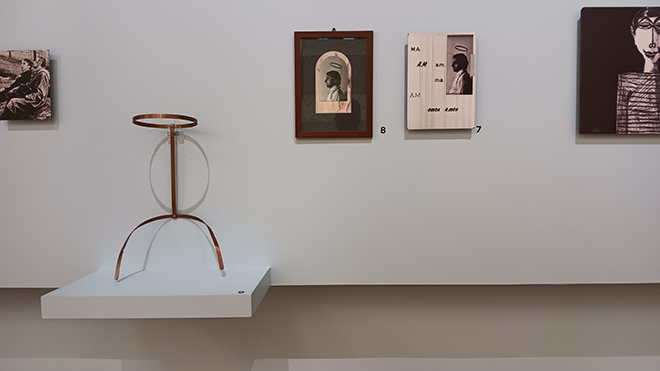
© arcomai I “I am a dragon, the true story of Alessandro Mendini”.
The retrospective, curated by Fulvio Irace and created in collaboration with the Alessandro Mendini Archive, was set up by Pierre Charpin, who collaborated on various occasions with Mendini in the past. Inside the space known as “Cubo” a selection of over 400 works is offered, ranging across various formats, materials and subjects, coming from public and private collections from all over the world. The material is divided into six exhibition sections: Identikit, Gulliver’s syndrome, Architecture, Fragilisms, Radical Melancholy and Rooms. This is a vast range of works which, although they represent a small part of the production of the Atelier Mendini, founded in 1989 with his brother Francesco, testify to the research of an artist who wanted to overcome the limits of the conventional, pushing design towards new creative frontiers.
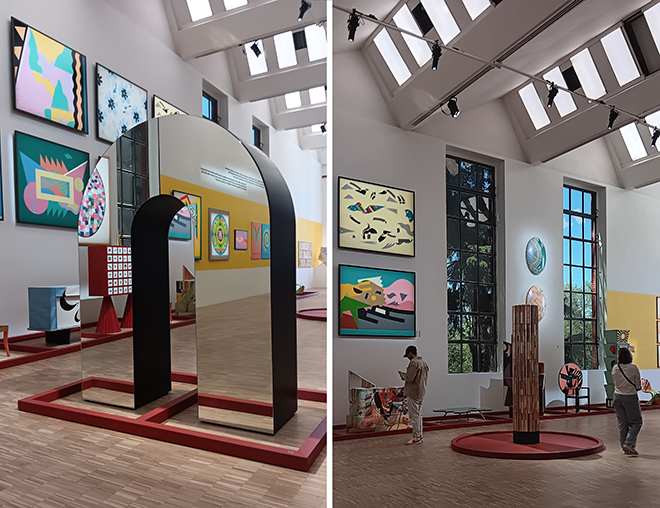
© arcomai I “I am a dragon, the true story of Alessandro Mendini”.
In Identikit, we can admire a series of self-portraits, created with different techniques and formats by Mendini throughout his life. Gulliver Syndrome collects a sequence of out-of-scale objects such as the Proust Armchair (at the entrance) and the Petite Cathédrale, both belonging to the collection of the Fondation Cartier, aligned along an imaginable urban axis together with the sculptures that are part of the Bisazza collection. Alongside these “domestic monuments” are miniatures of some projects created for Alessi. In Architecture, a selection of models of works designed by the Atelier Mendini are organized on a mezzanine floor, among which among the Italian ones we recognize: the metro stations of Materdei, Università and Salvator Rosa (2000) in Naples, the Bruno Bianchi municipal swimming pool in Trieste (2002) and the Henry Glass headquarters and showroom in Mansuè (2127). Fragilisms, is instead a section dedicated to the research that led to the “fragilism” manifesto, which the designer created in 2002 for the Fondation Cartier: a spiritual atlas on the trail of human fragility. Radical Melancholy is instead an area dedicated to the years of “radical design”, of which Mendini was one of the main theoreticians. In Rooms, we find the reproduction of three “bourgeois” rooms designed by Mendini, immersive environments in which quotes, memories and dreams accumulate.
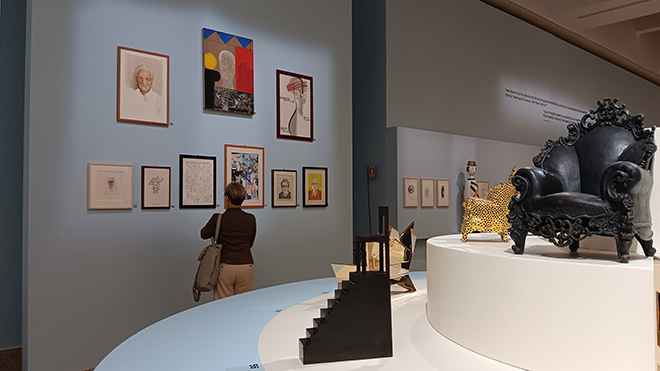
© arcomai I “I am a dragon, the true story of Alessandro Mendini”.
A distinctive element of the exhibition is the attention paid to the fusion between tradition and modernity in Mendini’s work. Through his ability to reinterpret and revisit traditional elements with a contemporary twist, he has been able to create timeless works that speak to the hearts and minds of viewers of every generation. The exhibition does not limit itself to displaying Mendini’s works, but also strives to offer a deeper vision of his personality and creative philosophy. A thought that here seems too focused on the world of design, perhaps neglecting a little the architectural work that had a great impact on the professional life of the design studio that bears his name.
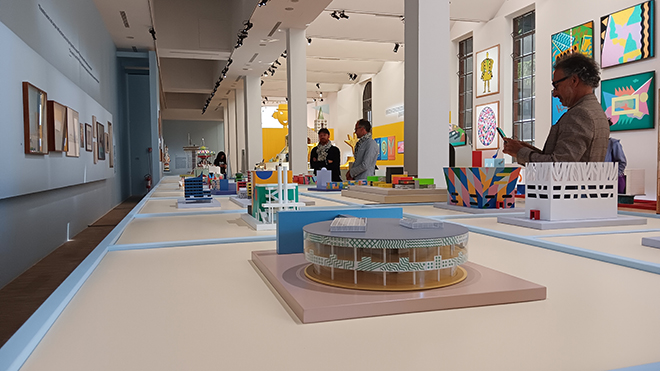
© arcomai I “I am a dragon, the true story of Alessandro Mendini”.
In fact, the beautiful architectural models on display are treated as an “abacus of shapes” which would have deserved photographic support and graphic documentation capable of describing the design grammar of the atelier. The Groninger Museum in Holland (1994) is perhaps one of the projects that would have deserved more space for further study. The complex is, in fact, the result – unique of its kind – of collaboration between designers (Michele De Lucchi, Philippe Starck and Coop Himmelb(l)au) and the artist Franco Stella), of which the Mendini studio covered the role of coordinator of the project. In this building there are all the Mendinian stylistic features and decorations, such as the golden tower and the “oversized” pointillist Proust motif, both made using Abet Laminati’s MEG laminate.
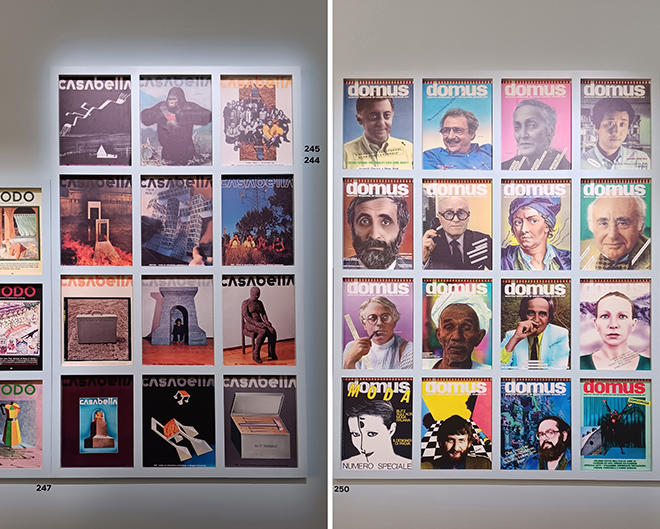
© arcomai I “I am a dragon, the true story of Alessandro Mendini”.
Mendini’s architecture is characterized by a postmodern and neo-constructivist approach, which stands out for the lively use of color and decoration, proclaiming the supremacy of this over the structure. For Mendini, decoration was not simply a superficial ornament, but an essential element of architectural design, capable of enriching the visual narrative of space and transforming our emotional experience. Through the use of bold and risky decorative elements, such as colorful towers and intricate geometric patterns, Mendini created buildings that exude vitality and joy, challenging conventional notions of functionality and utility.
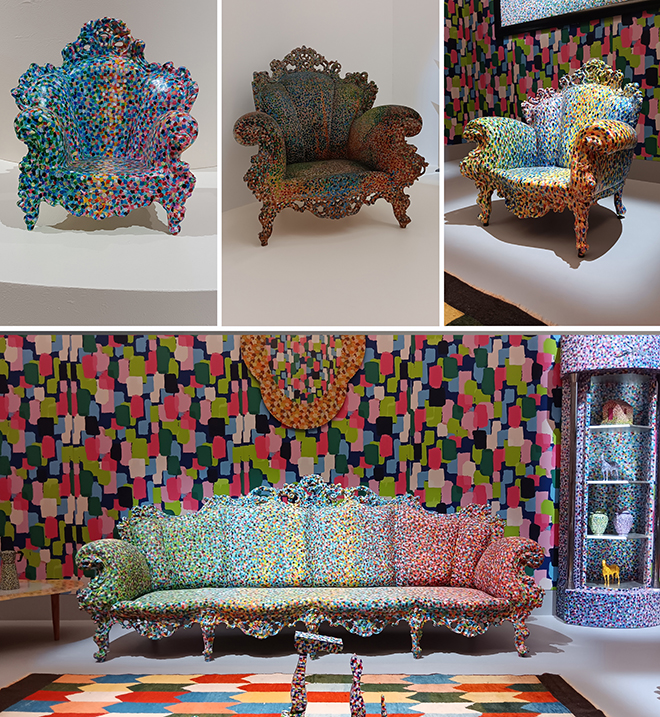
© arcomai I “I am a dragon, the true story of Alessandro Mendini”.
As mentioned, one of the focal points of the exhibition are the design works, which range from the famous Proust armchairs, with their intricate details and bright colors, to the revolutionary creations created for the Alessi brand. His playful and experimental nature is celebrated in the section that displays some of his best-known chairs and I am referring not so much to his famous Proust Armchair and its variants, but to those unlikely and uncomfortable domestic seats that aspire to the creation not of new forms but of new “butts”, new postures for a changing society. Each piece exhibited is a tangible example of his genius in combining shapes, colors and materials in surprising and innovative ways, but also a testimony to the poetic nature of his creativity.
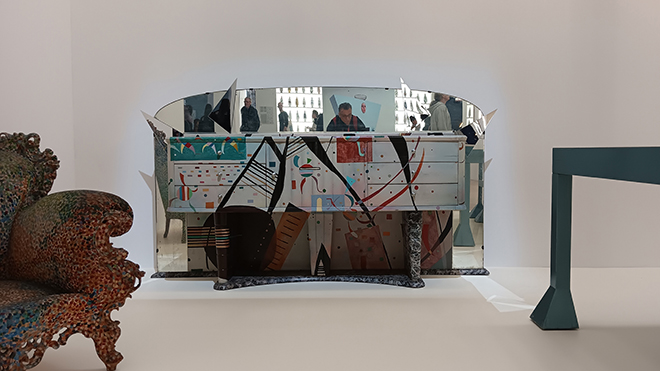
© arcomai I “I am a dragon, the true story of Alessandro Mendini”.
Overall, this exhibition goes beyond the simple display of works of art. It also explores Mendini’s influence on the contemporary design landscape. His revolutionary ideas and eclectic approach have inspired entire generations of designers, leaving an indelible mark on architecture, furniture and the art world in general. During his thirty-year commitment in the direction of magazines such as “Casabella” (1970-1976), “Modo” (1977-1981) and “Domus” (1980-1985; 2010-2011), then editorial platforms capable of spreading a “culture of the project” at an international level, has contributed to theorizing and promoting the renewal of Italian design and contributing to making Milan the world capital.
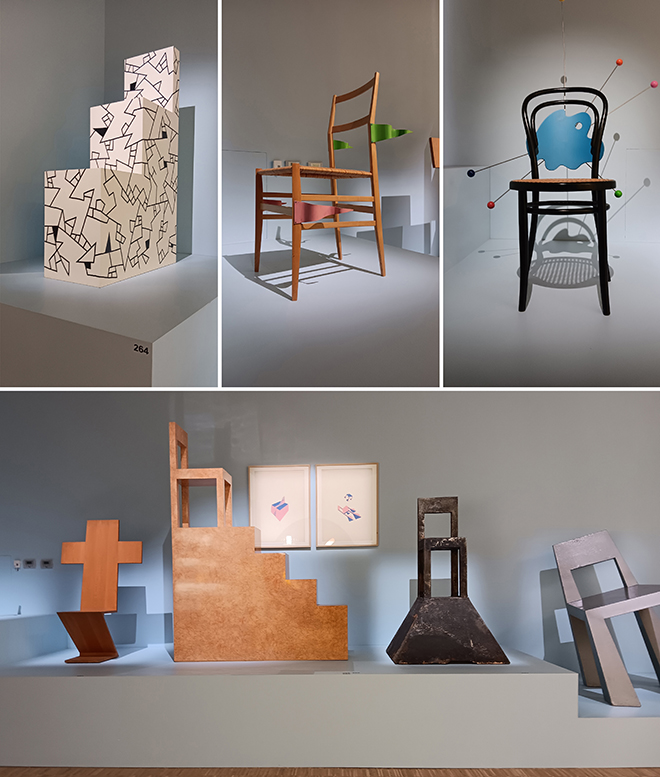
© arcomai I “I am a dragon, the true story of Alessandro Mendini”.
From a content point of view, the lack of a section that testifies to Mendini’s collaboration with Swatch, the Swiss watch company which in the 1980s with an aggressive marketing campaign and a “popular” price for a watch made in Switzerland it immediately gained notoriety on the market to the point of selling over 20 million pieces in the first three years of production, over 50 million in 1988 and well over 100 million in 1991. Mendini, in fact, was the art director of the company in the 90s, and created cult models for it such as the Metroscape (GN109), Cosmesis (GM103) from 1990, Lots of Dots (GZ121) from 1992, Fandango (SLR100) from 1994 and Spot the Dot, presented on the occasion of the 2016 Salone del Mobile. Instead, from the point of view of the exhibition, the invasive and unnecessary use of a red border around the works to keep the public away is criticized, the positioning of the paintings to fill the high walls of the exhibition hall; and in general, the failure to attempt to compact the exhibition space in such a way as to simulate that of the Atelier Mendini and recreate that domestic and intimate dimension where many of those works were conceived.
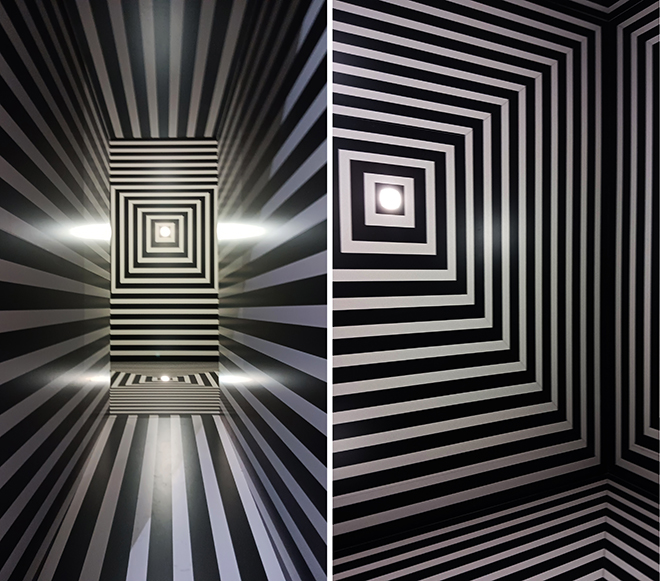
© arcomai I “I am a dragon, the true story of Alessandro Mendini”.
A documentary made by Francesca Molteni which traces the life and work of Alessandro Mendini is also shown in the cinema room. It is a 24-minute video that collects interviews and thoughts of him in which the visitor has the opportunity to completely immerse himself in Mendini’s universe, discovering his doubts, his inspirations and his challenges. In this story we discover that when he was young, he wanted to be a cartoonist – not an architect. He wanted to draw comics, tell life stories, do a job that was in some ways more complex than what he would have chosen to do in the future. His first job – which he defined as “serious” – was the editorship of Casabella, aware of the role of responsibility and commitment that the editorship of a magazine entailed.
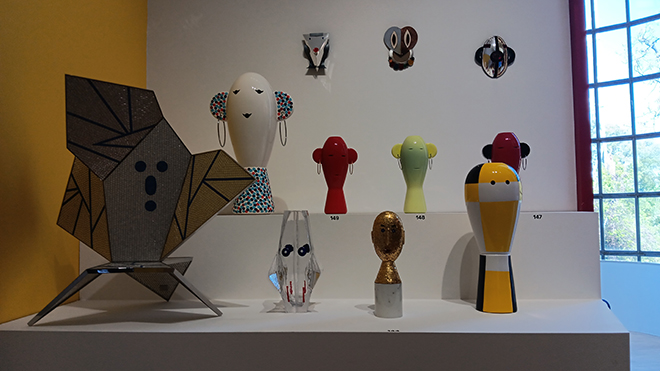
© arcomai I “I am a dragon, the true story of Alessandro Mendini”.
He speaks of Milan as a place of conflict but indispensable: the only city where he could have lived, even if without strong social ties; he who for many years has developed working relationships in countries far from Italy. But perhaps what accompanied him throughout his life was irony, an attitude that he took seriously and not as an end in itself; a dialectical tool that in the search for paradox he uses to enter into things and understand them. The rigor of his work is the seriousness of his irony. This exhibition is much more than a simple tribute to a great master of design. It is an immersive experience that celebrates the creativity, innovation and lasting legacy of one of the greatest creative geniuses and protagonists of Italian culture of our time. We invite all design enthusiasts not to miss this extraordinary opportunity to discover and celebrate the work of Alessandro Mendini.
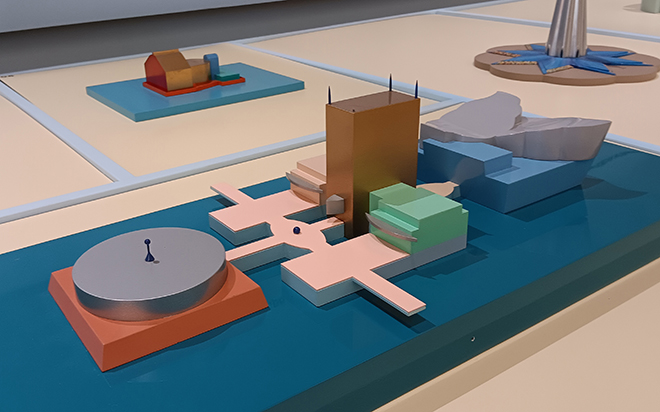
© arcomai I “I am a dragon, the true story of Alessandro Mendini”.
